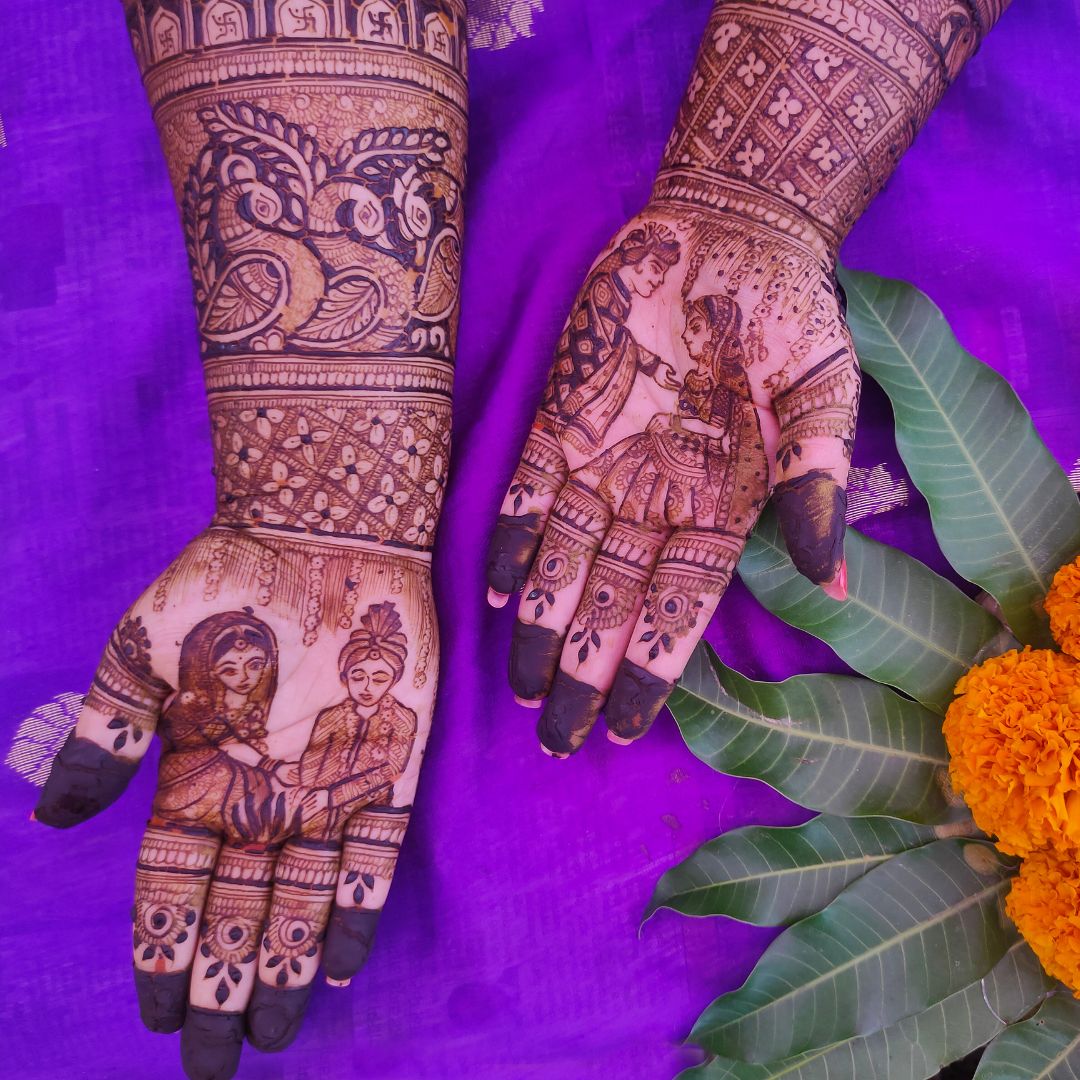Mehndi design:For Every Occasion
SWATI BARWAL
. 1 min read
Mehndi holds a special place in the vibrant and colorful traditions and rituals of Indian weddings and festivals. Mehndi is an important function in weddings in India, whether it’s on the bride's side or the groom's side. Without mehndi, every function feels incomplete. In India, women look for any happy occasion to apply mehndi, whether it’s a relative’s wedding, a religious fast, or any festival.

Mehndi holds its own special significance. Mehndi is not just an adornment but also a reflection of cultural and familial unity. The women of India do not see mehndi merely as a form of decoration; they consider it a symbol of their joy and celebration.In India, mehndi is considered a symbol of a good marital relationship, which is why it is also regarded as auspicious.In India, mehndi is considered an important part of the sixteen adornments (solah singaar). Everyone loves mehndi, whether married or unmarried.

The sixteen adornments (solah shringar) symbolize the physical, mental, and spiritual beauty of Indian women, and mehndi plays an essential role in it. Mehndi not only enhances women’s beauty but also brings joy and enthusiasm into their lives. The fragrance of mehndi is considered a symbol of peace and happiness, which spreads a new, positive energy.

Today, mehndi is applied not only in India but across the world. People now create various designs, like Arabic designs, Rajasthani designs, Marwari designs, Bombay-style designs, and many more. Mehndi is an integral part of Indian festivals. Its significance is not limited to just decoration or design; in India, it is considered a symbol tied to tradition, culture, and heritage.

Mehndi resides in the heart of every Indian as a symbol of good fortune. No matter the era or modernity, the importance and beauty of mehndi can never fade.
More Stories from
Lemon Flaxseed Drink for Weight Loss and Glowing Skin
Lemon and flaxseed water helps burn fat, cleanse your body, and brighten your skin. Learn how to make this powerful morning detox drink.
Top 10 Health Benefits of Sesame Seeds: A Superfood for Skin, Heart & Hormones
Discover the amazing health benefits of sesame seeds—from strong bones to glowing skin. Learn how to add this nutritious superfood to your daily diet.
Healing Words: Quotes to Soothe, Empower, and Energize You
Explore a collection of uplifting quotes to inspire your mornings, boost mental clarity, and spark daily motivation for a happier, mindful life.
Chaitra Navratri: A Time for Renewal and Self-Reflection
Learn how fasting, meditation, mantra chanting, and self-reflection help release negativity and invite positivity. Embrace Navratri rituals to purify the mind, body, and soul.
Chaitra Navratri 2025: Dates, Meaning, Rituals & Festivities
Chaitra Navratri 2025: Mark the Hindu New Year with fasting, prayers, and devotion from March 30 to April 7. Know its significance!



